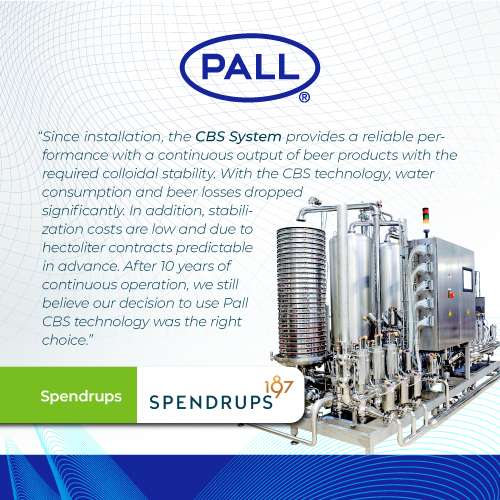Subscribe to our blog to stay up-to-date on the latest food and beverage insights and trends

How to Guarantee Stability of Alcohol-Free and Low Alcohol beer
July, 2025
The Current State of the Alcohol-Free and Low-Alcohol Beer Market
As health-conscious lifestyles continue to shape consumer behavior, the demand for non-alcoholic beer (NAB) and low-alcohol beer (LAB) is on the rise. Today’s beer drinkers are looking for flavorful, refreshing alternatives that align with wellness goals—without compromising on taste or quality.
Market Growth and Consumer Trends
The global non-alcoholic beer market is valued at USD 20.5 billion in 2024 and is projected to reach USD 43.9 billion by 2034, growing at a CAGR of 7.9%. This growth reflects a broader shift toward mindful drinking and a desire for functional beverages that support a balanced lifestyle.
Brewing Challenges in NAB/LAB Production
Despite the market momentum, brewing non-alcoholic and low-alcohol beer presents unique challenges. From managing colloidal stability and microbial safety to maintaining flavor during alcohol removal or incomplete fermentation, brewers must navigate complex processes to deliver a shelf-stable, high-quality product.
Production Methods
- Incomplete fermentation: Produces minimal alcohol but leaves fermentable sugars.
- Alcohol removal: Requires additional processing steps.
- Blending techniques: Combine both methods for flavor and consistency.
Colloidal Stability
NAB/LAB products often differ in composition from traditional beers, making colloidal stabilization more complex. These beers are more prone to haze and sediment, which can affect shelf life and visual appeal.
Microbial Vulnerability
With lower alcohol content, these beers are more susceptible to microbial contamination. Residual sugars and the absence of alcohol’s natural preservative effect increase the risk of spoilage.
Pasteurization Challenges
Traditional thermal pasteurization is less effective without alcohol’s synergistic effect. This requires higher temperatures and longer hold times, which can negatively impact flavor and stability.
Solutions for Stable, High-Quality NAB/LAB
To overcome these challenges, brewers are adopting advanced beer filtration systems and colloidal stabilization technologies tailored for NAB and LAB production. These solutions help ensure microbial stability, reduce oxygen pickup, and preserve the freshness and flavor of alcohol-free beer—even in small-batch or mixed production environments.
Colloidal Stability with Pall CBS System
Pall’s CBS System offers:
- Fully automated stabilization
- Customizable recipes for different beer types
- Minimal product loss and oxygen pickup
- Efficient changeovers for mixed production lines
Microbial Stability with Cold Final Filtration
Instead of relying on heat, cold sterile filtration removes microorganisms based on cell size—preserving flavor and freshness.
“Cold sterile filtration with CFS ensures maximum safety while preserving freshness and taste.”
— Cölner Hofbräu, Pall Customer
Even small-scale brewers can benefit, using just a single CFS Neo filter cartridge for effective microbial control.
Why It Matters
As the alcohol-free and low-alcohol beer market continues to expand, brewers must adapt to stay competitive. Investing in filtration and stabilization technologies not only ensures compliance and safety—it also protects brand reputation and meets evolving consumer expectations.
Discover how Pall’s advanced filtration technologies are helping brewers meet the growing demand for high-quality, alcohol-free and low-alcohol beers. Visit our Low & No Alcohol Beer Solutions Page
Frequently Asked Questions
Pall’s innovative solutions help brewers produce cleaner, safer, and more stable alcohol-free beers.
What makes non-alcoholic beer more vulnerable to spoilage?
The absence of alcohol and the presence of residual sugars reduce natural microbial protection, making NAB more susceptible to contamination.
How does Pall’s CBS System improve colloidal stability?
It uses PVPP based on continuous stabilization and at programable stabilization intensity to adsorb haze active substances
Can small breweries use Pall’s filtration systems?
Yes, even small-scale brewers can use the CFS Neo system with a single filter cartridge for effective microbial control.
- Category
- Author
- Sort By





